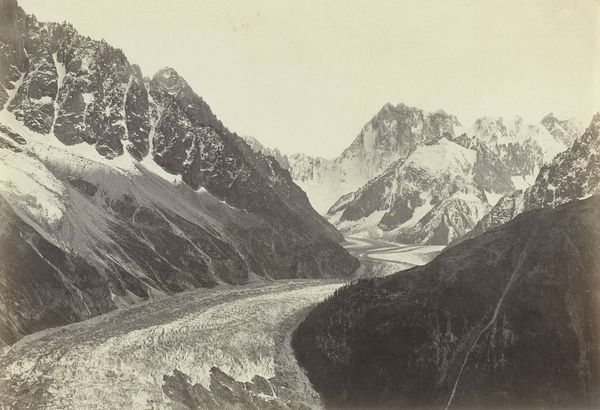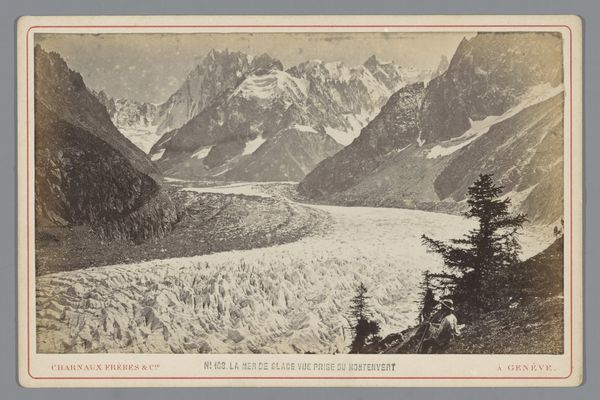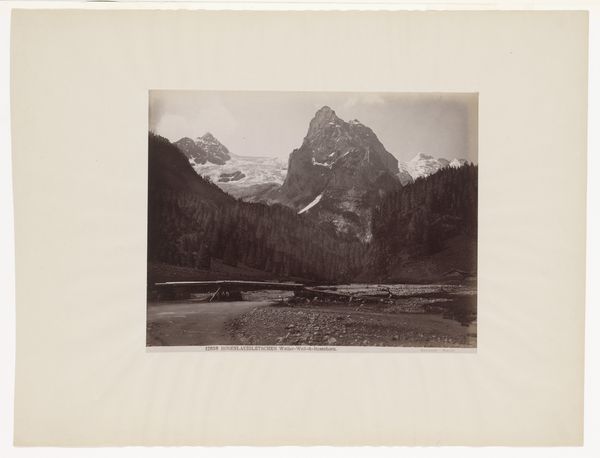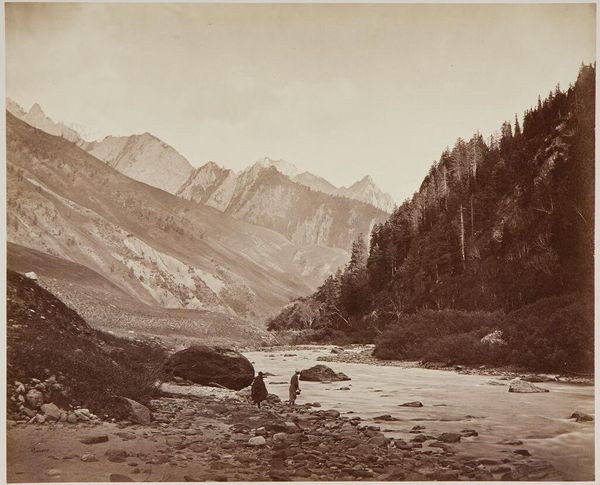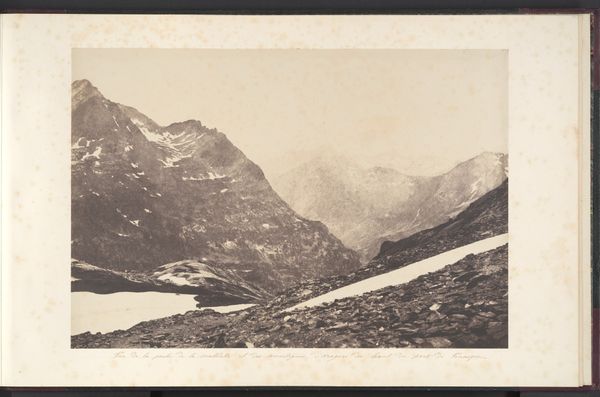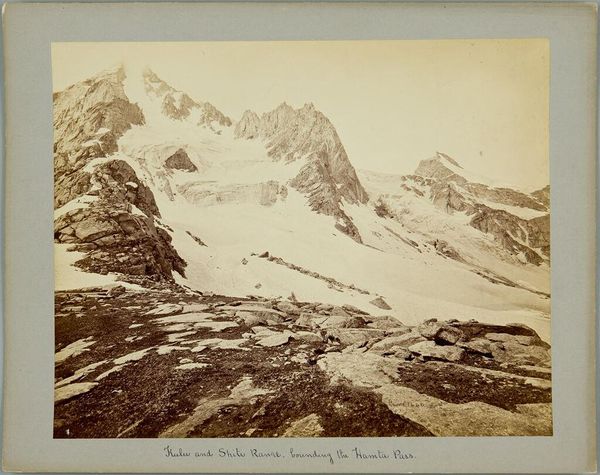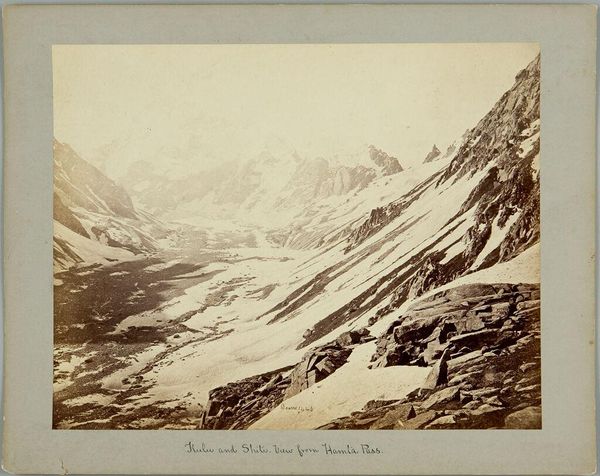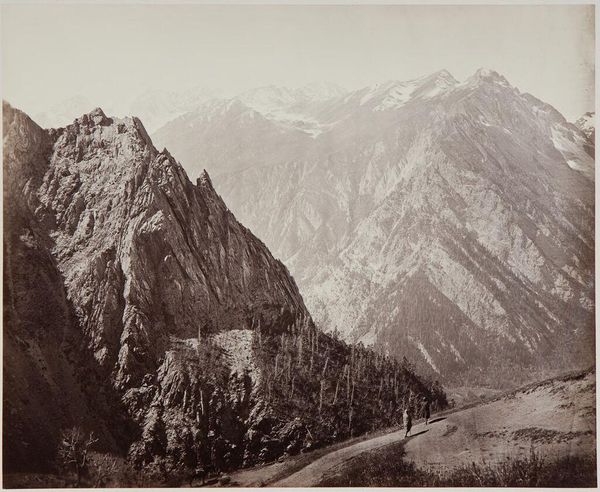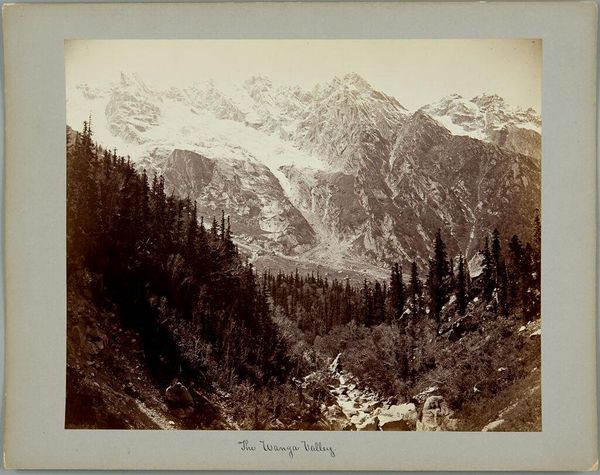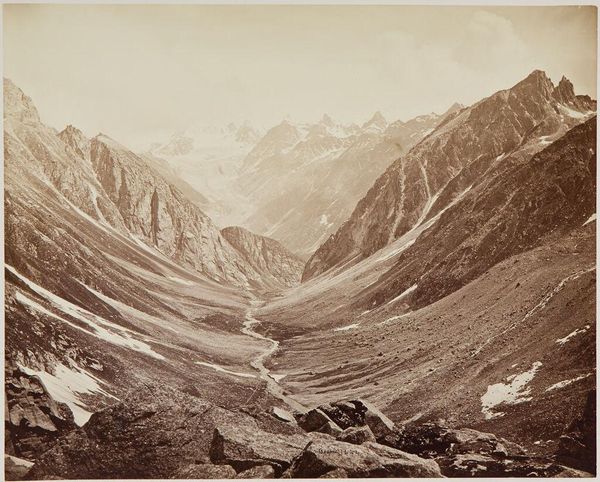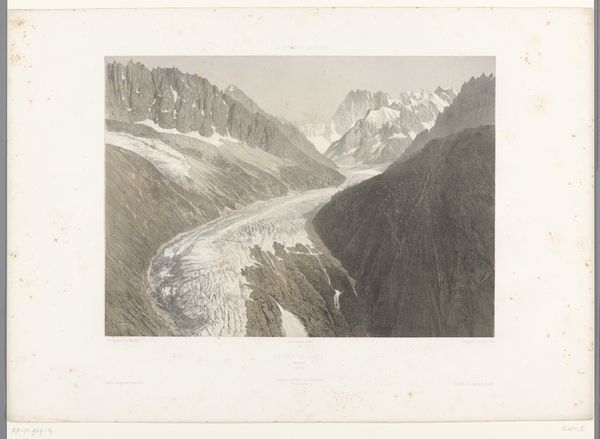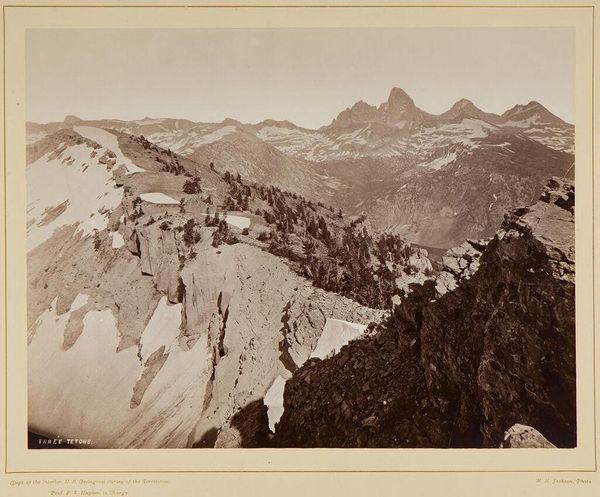
Wandelaars bij het Mer de Glace in de Zwitserse Alpen gezien vanaf de Montenvert before 1880
0:00
0:00
Dimensions: height 107 mm, width 160 mm
Copyright: Rijks Museum: Open Domain
Curator: This albumen print, titled "Wandelaars bij het Mer de Glace in de Zwitserse Alpen gezien vanaf de Montenvert," places us on the slopes of the Montenvert, overlooking the famous Sea of Ice glacier, sometime before 1880. It’s attributed to Auguste Garcin. Editor: It's an astonishing composition; the photographer uses the converging lines of the mountains and the glacier to create this deep sense of recession. It feels like falling into the picture. Curator: It speaks to the era's fascination with the sublime and the Romantic ideal, as well as the emerging tourist industry catering to upper-class European travelers eager to experience the dramatic landscapes of the Alps. These tourists sought an authenticity far removed from the increasingly industrialized urban experience. Editor: Authenticity yes, but through artifice too. Look how strategically those figures are placed, providing scale but also guiding our eye and creating this implied narrative. The limited tonal range of the albumen print also flattens the perspective while simultaneously exaggerating the textures of the ice and rock, so they both invite and resist us. Curator: Right. The clothing styles and leisurely postures of the group speak volumes about privilege and access at this time. Travel to such remote areas would require both leisure time and considerable resources, a social commentary made silently apparent within this sweeping panorama. Editor: Panorama, exactly! Garcin uses this view, composed using the camera’s inherent capabilities, to emphasize scale—an intellectual concept made visually explicit. The distant, pale, shimmering glacier emphasizes the monumental permanence against which human existence becomes merely a footnote. Curator: The composition also embodies the colonial gaze of that era. The photographer frames nature to underscore both its grandeur and, paradoxically, its potential subjugation. Photography served as an instrument, both artistic and scientific, for staking claim and cataloging territory during an era of vast European expansion. Editor: And, ultimately, even the smallest decisions in composition—the framing, tonal gradations, and those seemingly insignificant human figures—contribute layers to its effect on us even today. It's less a straightforward depiction of the natural world and more a deliberate construction designed to trigger an intellectual and emotional response. Curator: Looking closely at Garcin’s image allows us to appreciate both his craftsmanship and his positioning within the aesthetic and social currents of his time. It gives one much to consider regarding the politics of viewing and recording our landscape. Editor: A powerful lesson revealed with careful observation!
Comments
No comments
Be the first to comment and join the conversation on the ultimate creative platform.
